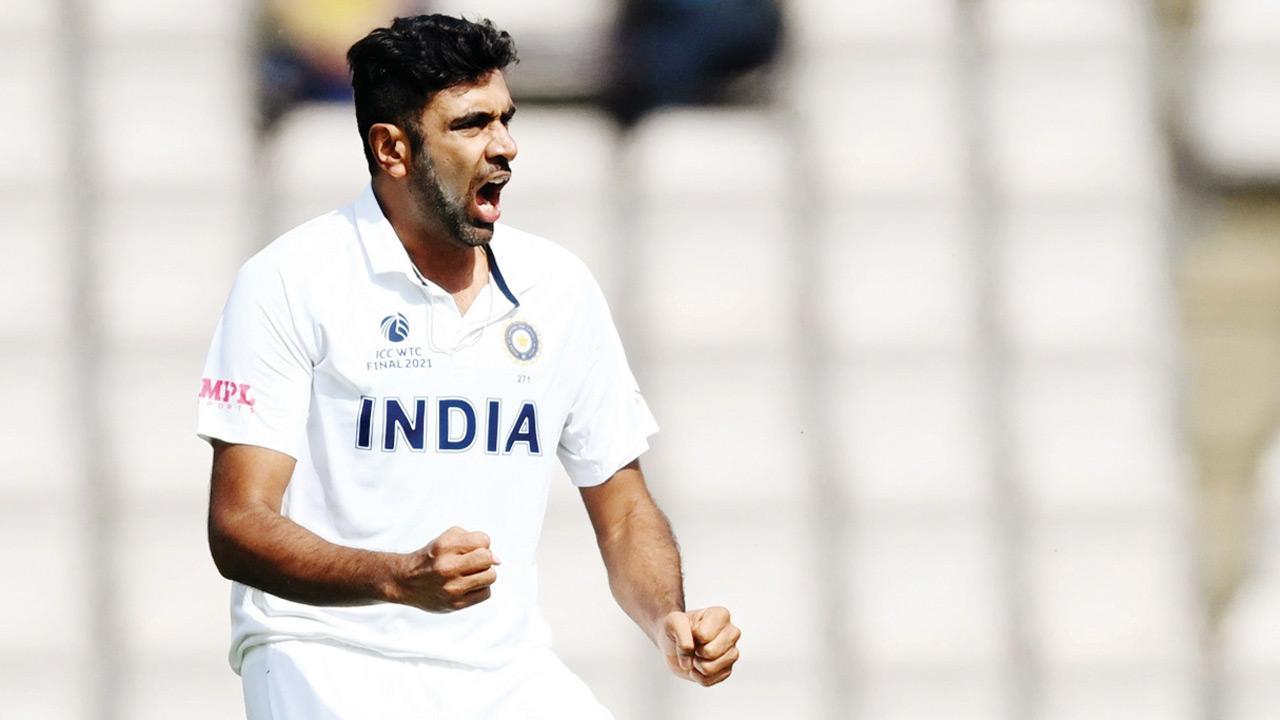India’s best combination includes Ravichandran Ashwin. He’s a fine bowler under all conditions as he proved in Australia, so they need to find a way to fit him into the XI

Off-spinner R Ashwin. Pic/Getty Images
There’s no doubt that India is a very good all-round cricket team. They’ve conclusively proved it by winning consecutive series in Australia and now having success in England (albeit Covid) whilst they are virtually unbeatable at home.
ADVERTISEMENT
However, that isn’t to say they can’t improve. That’s how good teams remain at or near the top; by constantly searching for ways to be better. Herbie Collins, a shrewd Australian captain of the 1920’s reckoned the most important aspect of selection was finding the right combination.
India’s best combination includes Ravichandran Ashwin. He’s a fine bowler under all conditions as he proved in Australia, so India need to find a way to fit him into the XI. India, in trying to find a balance between the right and left-handed batsmen in the middle-order at The Oval, may have inadvertently stumbled on the solution. Ravindra Jadeja at five.
Substantial depth
If Jadeja proves good enough to hold down that spot in the order then the other piece required to complete the jig-saw puzzle is a seam bowling all-rounder. The ideal player would be a fully fit Hardik Pandya, but they do have a second choice in Shardul Thakur. That is the great strength of this Indian side; they have substantial depth.
A middle-order that reads Jadeja, Rishabh Pant, Pandya, Ashwin should provide the runs expected of that section. With three pacemen to follow, the batting is then supported by a versatile attack. That’s the advantage of having a strong, well-balanced attack. You don’t need huge scores to chase victory.
The simplest equation for winning Test matches is for the batsmen to score quickly in order to give the bowlers enough time to capture 20 wickets. The other good point about that middle-order is it’s inter-changeable. Skill-wise Pant is the best batsman. He’s capable of restraint when the situation demands so he could easily handle five, especially when India bat first.
However, if he’s had a long stint in the field he could slide down the order to allow Jadeja to fill the five slot. Pandya also has the potential to handle No. 5 and given encouragement he could fulfil the role.
Another attribute of that trio is their powerful strokeplay. The ability to accelerate the scoring rate is essential in Test cricket and that trio are an ideal combination to take advantage of a good start to the innings. They are also a perfect fit for situations where the team is either chasing or setting a target.
Rohit capable enough
The only downside would be the loss of Ajinkya Rahane’s tactical input and his slip fielding to the spinners. Nevertheless, Rohit Sharma is now an acclaimed skipper and he’s capable of handling the vice-captaincy role.
On the subject of slip fielding, this is one aspect of England’s selection process that is definitely flawed. They’re besotted with having a wicketkeeper who can bat and in doing so they’ve overlooked the fact that slip fielding standards tend to imitate the form of the man with the gloves.
The recent batting contributions from Jos Buttler and Jonny Bairstow don’t compensate for their below par glove work. If Ben Foakes is the best ’keeper he should play. He’s no slouch with the bat and his greater range standing back would help widen the slip cordon and lift the standard. The return of Ben Stokes will also greatly improve the standard of slip catching which in turn helps make the attack better.
The art of good selection is to be constantly looking for ways to make even a top-class team better. The priority is always to win the next match, but this should be achieved with one eye on the future.
Tweaking the Indian middle-order to accommodate the skills of Ashwin should be a priority for the selectors. It’s a scary thought for the other Test sides that Virat Kohli’s highly successful team can be improved.
 Subscribe today by clicking the link and stay updated with the latest news!" Click here!
Subscribe today by clicking the link and stay updated with the latest news!" Click here!






